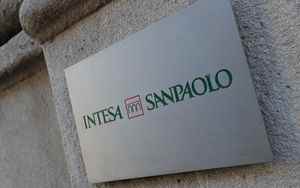(Finance) – “In the first quarter of 2022, Italian GDP fell by -0.2% qoq, after the figure for the end of 2021 was revised upwards to 0.7% from a previous 0, 6%. The figure is in line with the consensus expectations, but better than our expectations and those of the Government and the Bank of Italy among others “. This is what he says Paolo Mameli, senior economist at Intesa Sanpaolo’s Studies and Research Department, commenting on the GDP data.
There annual variation – Mameli points out in the report – it slowed down to 5.8% from 6.2% in the fourth quarter of 2021. The figure leaves GDP just -0.4% below pre-pandemic levels (at the end of 2019). There “acquired” growth for 2022 (in case of stagnation in each of the remaining quarters of the year) it is equal to 2.2% (previously it was estimated at 2.3%).
“The detail by components will be released by Istat on the occasion of the second estimate on May 31st. However, – continues the economist – the statistical agency has anticipated that the decline in GDP is due to services, while the added value remained stagnant in industry: we think that industry in the strict sense has contributed negatively, while construction should have maintained an expansive trend. request, there was a positive contribution from the internal component (gross of inventories) while the foreign trade it contributed negatively, which is not surprising given that at this stage imports are more lively than exports, not only in nominal terms but also net of the price-effect. In any case, we think the domestic demand has been driven by investments and inventories, while i consumption they may have contracted for the second consecutive quarter, dragged down mainly by spending on services “.
In summary, – comments Mameli – “the GDP data at the beginning of the year it was less weak than we expected. Moreover, the evolution during the quarter was irregular, with a contraction of the economic activity in January, in the wake of the peak of thepandemic wavea rebound in February and then likely a new slowdown in March in the wake of the first effects of the war in Ukraine. The weak end of the quarter signals downside risks also for the current quarter. In our opinion, the GDP at the beginning of the year fell mainly due to the peak of the pandemic wave, as visible from the negative contribution of the services sector, while it does not seem to have been fully affected by the effects of the international geopolitical crisis, not even considering the price transmission channel. At the moment our basic scenario – concludes Mameli – foresees a rebound in GDP in the current quarter, albeit weaker than we expected before the war in Ukraine. However, they cannot be ruled out more severe scenarios, especially if a Russian gas embargo, which would have effects above all on the industrial sector “.
